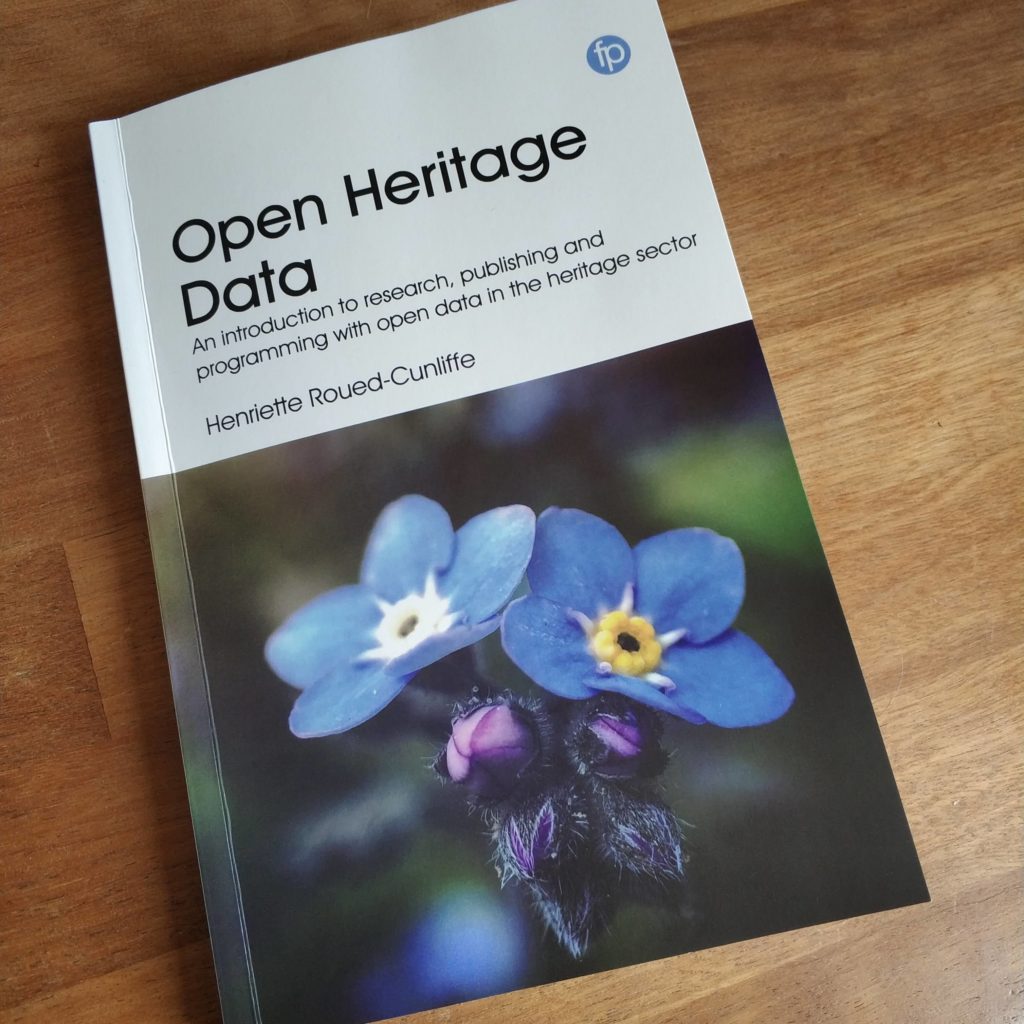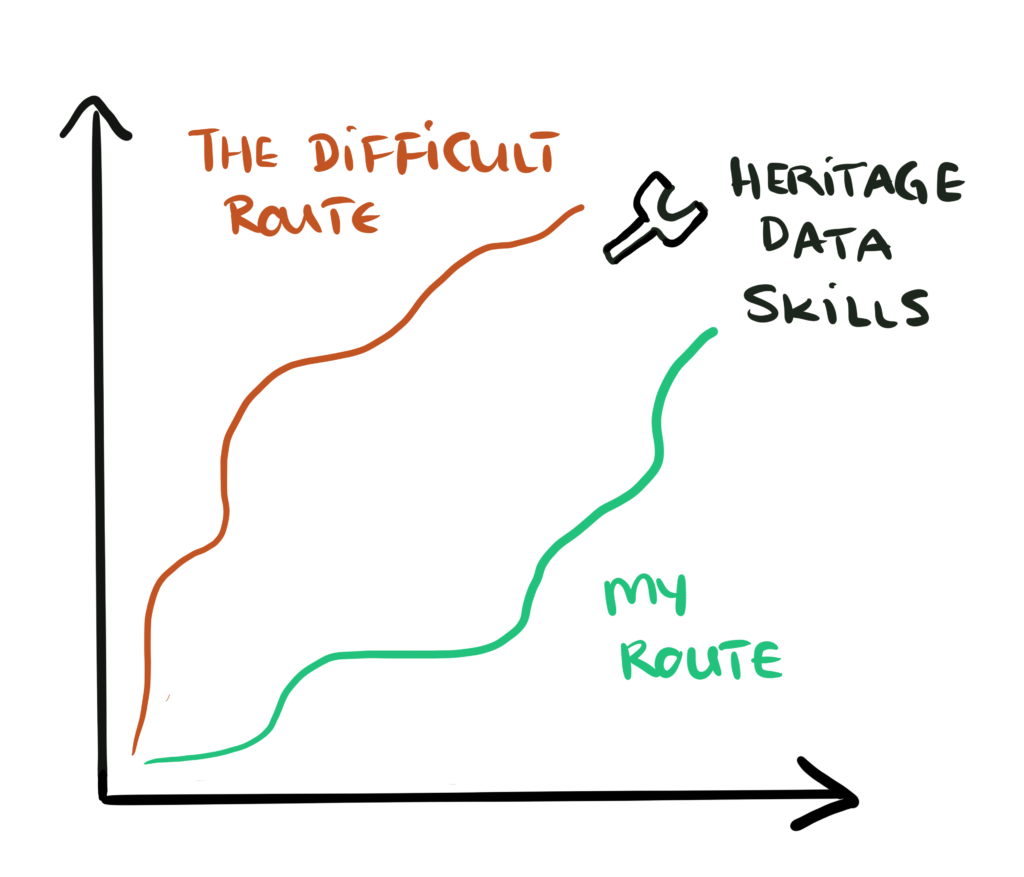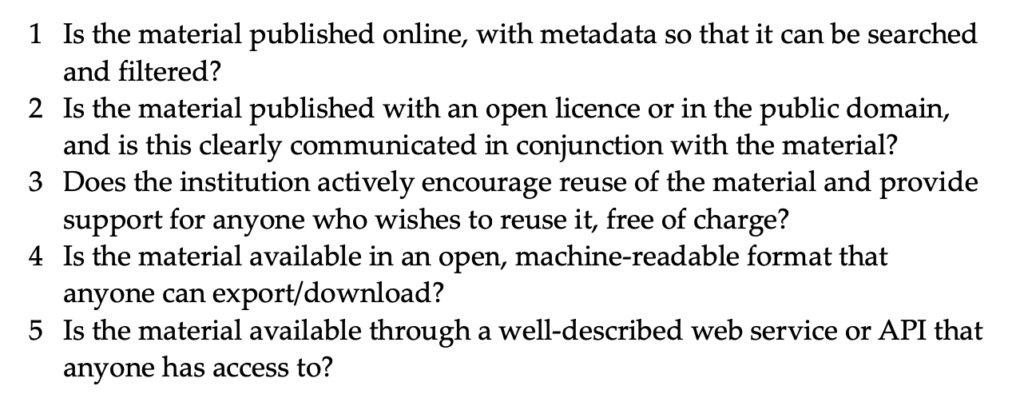
In 2017 I published my first book on Participatory Heritage – it was an edited volume, in collaboration with Andrea Copeland (IUPUI). It was very special seeing a book come together in physical form and I agreed with Facet Publishing that I should write a book on the subject of one of the chapters, namely on the concept of openness and heritage data.
Three years later the plan has come to fruition and the book, Open Heritage Data, is now lying here next to me in its physical form. The forget-me-not on the cover is highly symbolic of my goal that technology and openness should come to the aid of diverse and varied heritage (and it matches my tattoo). I can’t wait to use the book with my students and see what use colleagues around the world can make of it.
It’s a blatant lack in our skillset not to be able to understand the machinery that so shapes how we work with heritage in the 21st century. Roued-Cunliffe to the rescue!
In praise of the book
Merete Sanderhoff, Curator and Senior Advisor, SMK, The National Gallery of Denmark
Like Sanderhoff, I really believe there is a gap in our knowledge and discourse on heritage data that this book can help fill. In the preface of the book. when talking about all those working with heritage I write:

We rarely have a computer science background and the learning curve can sometimes be so steep that it becomes an impossible challenge. It is this experience that has motivated me to write this book, and a wish to take the reader by the hand and demonstrate the very basics of working with open data in the heritage field. I hope to make the learning curve a little smoother for beginners – because, as this book will illustrate, working with heritage data in an open manner is important for the future and cannot be left to computer scientists alone.
(Roued-Cunliffe 2020, p. xviii)
By this I don’t mean that having a computer scientist background is not a useful thing in the heritage sector. I just mean that there are so few who do and so many who have a background purely from the humanities. I believe that they should also educate themselves on working with data and openness as this becomes more and more important skills in heritage in general. When I first studied to become an archaeologist and worked on archaeological digs in Denmark and the UK my skills and interest in digital heritage gave me the opportunity take some responsibility for the GPS and digital recording. Few of us were interested in working with this at the time. In the intermittent years, these processes have become more mainstream, and an archaeological dig produces more and more born-digital data now than ever. Therefore, skills in digital registration and data management need to evolve in the profession and have also done so. But we also need to evolve conversations and attitude to open data sharing as well as the skills to analyse and communicate these datasets.
In an attempt to smooth the learning curve and inspire the reader to get stuck in with the datasets I began the book with a chapter called Openness in heritage. This chapter reads very different from some of the later chapters as it follows the historical/thematic evolution of structured heritage work, through early institutionalisation and professionalisation, to the current step of open data. The idea with this was to inspire heritage interested people to work with digital technology, by showing them the historical evolution of openness in their field.
This first chapter also introduces the Open Heritage Data (OHD) model, which is a set of five questions that can be used to evaluate how open a particular heritage dataset is. It should not necessarily be the goal of every institution or private person to add an API to the heritage material they publish online. How far one wants to go on the scale is highly dependent on the type of use and users the material is aimed at.

The second chapter looks at how we can share heritage data in a way that is legal. This is an important topic, again much too important to leave to lawyers with no interest in or knowledge about heritage. I make it very clear several times in the text that my words should not be uses as legal advice in any way. However, I do believe that it is very important that the heritage sector is educated and involved in the making and development of the laws that concern them. I have identified these in relation to open heritage data as: 1) heritage laws, 2) Data protection laws, and 3) copyright laws. Instead of answers, each section is followed by a series of questions the reader can use to understand how these laws affect heritage in their jurisdiction. One of my biggest worries in regards to open heritage data is how fear and uncertainty about these laws and their use can result in stagnation and in the long run, that a more rich and diverse heritage gets forgotten.
The following chapters in the book take on a more practical approach. In the third chapter I illustrate how it is possible to publish heritage data, through case examples from around the world. In the fourth chapter I look at how different groups and institutions have made use of heritage datasets of varying openness. These two chapters can be seen as an inspiration catalogue.
Chapters five, six and seven are the most technical, with tutorials that take the reader through very simple reuse of open data on a website, all the way to some simple data science techniques that can be used for historic research.
Finally, I want to say thank you to everyone who has supported me and this book along the way. It has been long underway and is a combination of what I feel were the best lessons learnt from my studies, work and recent research. Please enjoy!